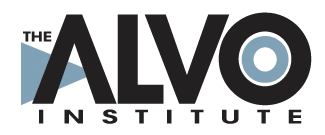Everyone on our team has been a classroom teacher. We think that makes a difference when it comes to being an effective coach. A teacher recently said of the Alvo team, “The support your team provides is SO practical!” This is one of the highest compliments we could ask for from a teacher. Providing practical support begins with anticipating some basic worries and needs of a classroom teacher.
This list of FAQs (the first in a 3 part series) was assembled by the entire Alvo Team based on their close collaboration with classroom teachers.
• I already have a successful practice. Why should I change?
◦ At Alvo, we believe that blended learning is a data driven, technology enhanced way to deepen differentiation to the level of personalizing instructional plans for each student. Blended learning helps extend what already works in your classroom. Done well, blended learning incorporates new practices and tools into your existing best practice repertoire. It does not require a complete overhaul of everything you do in your classroom. Blended learning has some unique things to offer your students through personalized, data-driven learning experiences, opportunities to engage in technology, and increased responsibility in directing their own learning.
• How will blended learning change my practice?
◦ You will gradually implement elements of blended learning, such as more small group work, greater individual differentiation, and less direct instruction, into your existing practice. In addition to using computer-based learning in a meaningful way, you’ll be examining how to personalize learning for each student in your classroom with the aim of meeting each student’s individual needs.
• How is blended learning different from using learning centers?
◦ One popular model of blended learning, the station rotational model, does resemble traditional learning centers. Though, many of the routines used in learning centers are similar, the main difference is that the centers or “stations” are customized to the learning needs of each group of students that uses them. All students might not need to rotate through all stations, and the learning that goes on for each student in a station is likely to be different, according to their needs. Another big difference is the inclusion of online content as one of the instructional experiences.
• What will my role be as a teacher in a blended model?
◦ The teacher’s role in the classroom is still that of the expert. You will be making decisions about how your students will be learning, and you will facilitate much of the instruction, like whether to implement traditional direct instruction or small groups, independent practice, project based learning, and/or online work.
• I don’t currently customize instruction, or I don’t use a lot of small group work. It seems complicated. How can I plan all these different lessons?
◦ You’ll gradually implement components of blended learning based on your strengths. While you develop a streamlined system for lesson planning and classroom routines, you will slowly increase the level of complexity in differentiation of instructional experiences. Although it may seem like an entirely different approach, you will be surprised by how many components of blended learning you are already using in your classroom. And remember, you will be adding to your current best practice repertoire.
• I’m the only teacher and adult in my classroom. Will this still work?
◦ Yes! Blended learning does not require more teaching staff. It does require that you release students to become self-directed learners (with your oversight and facilitation). You’ll develop a system of classroom procedures to engage your students in learning that will free you to focus your professional skills where they are needed most: to provide a rich and robust learning environment for all your students.
• How can I stay on track with my school’s curriculum expectations?
◦ Your plans for your students’ learning will be closely aligned with your school’s/district’s curriculum expectations as well as state and/or Common Core State Standards. A successful blended learning program depends on careful tracking of student progress toward these curricular and standards-based expectations; it is part of the process of personalizing learning for each student.
• What does it take to get started?
◦ Start by reflecting on what is happening in the classroom and with student achievement. What are you are trying to deepen, solve, or enrich in the classroom experience? Take time to learn about the different models of blended learning that have been implemented and the different types of classroom models that are already out there. Then, choose one or two ways you’d like to introduce elements of blended learning to your classroom initially. Start slow. Be ready to innovate, evaluate, and adjust.
• I already have my students learning in groups, and I differentiate instruction. What’s next?
That’s a wonderful start! In addition to deepening those practices, consider how you might further personalize each student’s learning using data collection and analysis as well as some computer-based learning to expand the variety of instructional opportunities for students.
